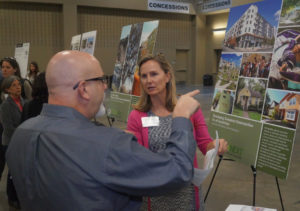 The draft of Austin’s new Land Development Code was released on January 30th, and I must admit that I was intimidated by the sheer volume of the document. At 1,100+ pages, it’s going to take a large time commitment (and a lot of cups of coffee!) to make it through.
The draft of Austin’s new Land Development Code was released on January 30th, and I must admit that I was intimidated by the sheer volume of the document. At 1,100+ pages, it’s going to take a large time commitment (and a lot of cups of coffee!) to make it through.
I have served on the CodeNEXT Code Advisory Group (CAG) since its inception, and I’m joined by HousingWorks Board member Terry Mitchell, as well as HousingWorks’ Policy Committee members, Liz Mueller and Dave Sullivan.
Of course, HousingWorks is looking at CodeNEXT from an affordability angle. The Affordable Housing Incentive Program is a crucial component of CodeNEXT (Article 23-3E). This section is currently a “placeholder” in the draft code. We are eagerly awaiting the draft section, which will be released in conjunction with the draft map of the code on April 18th.
From our perspective, there are two components to affordability: legally-restricted affordable housing and market affordable housing. Legally-restricted affordable housing is generally subsidized and/or incentivized through a local, state, or federal program. Market affordable housing is privately owned and more “affordable” because it is older housing stock and/or lacking in recent investment.
Additional supply of housing is crucial to helping our current affordability crisis. However, additional supply will not solve our affordability problem. Additional supply will relieve some of the market pressures (e.g., limited stock, high occupancy, etc.) and will help to “filter” down more affordable housing stock. It is important to note, however, that filtering is not perfect and it takes time. Sometimes decades. Bottom line – supply alone is not the answer.
In addition to increasing our housing supply and diversity of housing types, we need to make sure that we are incentivizing truly affordable housing. We do this by offering “preferred treatment,” such as density bonuses, fee waivers, and expedited permit processing, in exchange for legally-restricted affordable housing. This is much-needed housing that serves individuals and families who cannot afford to pay market rates for housing. Legal restrictions ensure that the housing serves the intended households (typically households earning no more than 60% of Median Family Income) for an extended period (typically 40+ years for rental housing). With layered subsidy (such as the city’s nationally-lauded general obligation bond program for affordable housing), affordable housing can serve extremely-low income households, including seniors, people with disabilities, and the working poor.
We need to be strategic with our incentives and with our subsidies. Imagine Austin (with the currently contemplated Austin Strategic Housing Plan) and the Land Development Code can be our road map for affordability. If we weave affordability into the code, we will further HousingWorks’ vision and goal of “all kinds of homes in all parts of town for all kinds of people.”
Stay involved and stay tuned!